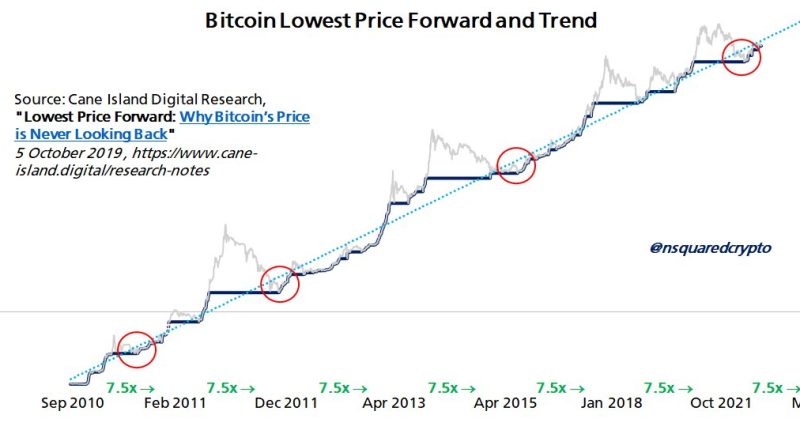10 Effective Crypto Portfolio Strategies You Need in 2025
Table of Contents
- 1. Diversify Your Crypto Portfolio
- 2. Optimize Asset Allocation
- 3. Implement Risk Management Techniques
- 4. Balance Between Short-term Trading and Long-term Holding
- 5. Prioritize Security and Safe Storage
- 6. Conduct Thorough Market Research
- 7. Leverage Technology and Automation
- 8. Incorporate Tax Planning Strategies
- 9. Stay Updated with Market Trends and Regulations
- 10. Regularly Review and Adjust Your Crypto Portfolio
1. Diversify Your Crypto Portfolio
Importance of Diversification in Crypto Investing
One of the foundational principles of building a robust crypto portfolio is diversification. In 2025, the crypto market continues to expand with new coins and tokens emerging regularly. Relying solely on a few assets exposes you to heightened risks, such as market volatility or project failures. Diversifying spreads your investments across various cryptocurrencies, reducing your exposure to any single asset’s downturns.
For example, instead of investing exclusively in Bitcoin, consider including altcoins like Ethereum, Solana, or other promising projects. This strategic diversification can help stabilize your overall portfolio against unpredictable market swings. According to recent studies, diversified portfolios tend to outperform concentrated investments over the long term in volatile markets.
Practical tip: allocate your funds across different sectors within crypto, such as smart contracts, decentralized finance (DeFi), and non-fungible tokens (NFTs), to further mitigate risks and seize growth opportunities.
Examples of Effective Diversification Strategies
In 2025, a well-rounded crypto portfolio might include a mix of established coins and promising new tokens. For instance, owning 50% in Bitcoin and Ethereum, 20% in DeFi assets like Uniswap or Aave, and 30% in emerging tokens can provide a good balance. Balancing macro assets with innovative projects offers stability while allowing for growth potential.
In addition, it’s wise to consider geographic diversificationâinvesting in projects from different regions. This can help protect your portfolio from localized regulatory changes or economic shifts. Remember, diversification doesn’t eliminate risk but minimizes it effectively.
Actionable tip: Review your portfolio quarterly to rebalance and ensure you’re maintaining a diversified and resilient crypto portfolio in 2025.
2. Optimize Asset Allocation
Understanding Your Risk Profile
Effective crypto portfolio management starts with understanding your risk tolerance. Are you comfortable with high volatility for the chance of higher returns, or do you prefer a more stable investment approach? By assessing your risk profile, you can tailor your asset allocation accordingly.
In 2025, tailored asset allocation is even more crucial as the market remains unpredictable. Younger investors may allocate a larger percentage to riskier assets like small-cap altcoins, while conservative investors might prefer more established tokens or stablecoins.
Pro tip: use online risk assessment tools to define your comfort zone and adjust your crypto portfolio accordingly to align with your financial goals.
Allocating Assets Strategically
Popular strategies include the 60/40 ruleâthough adapted for cryptoâto balance growth and safety. For instance, assigning 70% to core holdings like Bitcoin and Ethereum and 30% to speculative assets can provide a good mix. Additionally, consider passive income strategies like staking or yield farming to optimize your portfolio’s earning potential.
In 2025, implementing dynamic allocationâadjusting your holdings based on market conditionsâcan help capture gains and reduce exposure during downturns. Tools like portfolio trackers can assist in real-time rebalancing.
Remember, strategic asset allocation is not a set-it-and-forget-it approachâregular review ensures your crypto portfolio remains aligned with market trends and personal risk tolerance.
3. Implement Risk Management Techniques
Utilize Stop-Loss and Take-Profit Orders
Setting stop-loss and take-profit orders is essential to protect gains and limit losses. For instance, if a coin reaches a 20% gain, you might set a take-profit order to secure profits automatically, while a stop-loss order at 10% below your purchase price minimizes downside risk.
In 2025’s volatile environment, automated orders can prevent emotional decision-making during sudden market dips or surges. Tools within crypto exchanges facilitate these strategies, making risk management more accessible.
Pro tip: review and adjust your orders regularly based on market movements and your investment strategy.
Use of Hedging Strategies
Hedging involves taking counterpositions to protect your crypto assets. For example, using derivatives like options or futures can hedge against market downturns. While more advanced, these strategies are increasingly accessible through several crypto platforms in 2025.
Hedging provides a safety net, especially if you hold a significant portion of your crypto portfolio in volatile assets. Itâs crucial, though, to understand the risks involved with derivatives before implementing hedging strategies.
Practical tip: start small with hedges and expand as you gain experience and confidence in these risk management tools.
4. Balance Between Short-term Trading and Long-term Holding
Strategic Long-term Investment Approach
Holding assets long-term, often called ‘HODLing,’ remains a popular strategy in 2025. It allows investors to benefit from the overall growth of crypto markets over time, dodging short-term volatility. Famous examples include Bitcoin holders whoâve seen substantial gains over the past decade.
For your crypto portfolio, focus on solid projects with strong fundamentals, allowing you to withstand short-term swings and capitalize on long-term growth. Consistency in holding core assets has historically produced reliable returns.
Pro tip: consider dollar-cost averaging (DCA) to mitigate the impact of market volatility and steadily grow your holdings over time.
Active Short-term Trading Strategies
While long-term holds are essential, active tradingâbuying low and selling highâcan boost earnings in the short term. In 2025, employing technical analysis and staying attuned to market news will be critical for successful trading.
However, active trading requires discipline, quick decision-making, and a well-defined strategy to avoid emotion-driven mistakes. Combining both approachesâlong-term holdings with tactical tradesâcan optimize your crypto portfolioâs performance.
Actionable tip: set clear entry and exit points, and avoid overtrading to maintain a healthy balance.
5. Prioritize Security and Safe Storage
Using Hardware Wallets and Cold Storage
Security is paramount in managing a crypto portfolio. In 2025, hardware wallets and cold storage solutions are the best options to protect your assets from hacks. Keep your private keys offline and away from internet-connected devices.
For instance, popular hardware wallets like Ledger and Trezor provide robust security features for storing large holdings. These are especially recommended for long-term investments or significant portfolios.
Practical tip: regularly update your hardware walletsâ firmware and back up your seed phrases securely.
Implementing Multi-Factor Authentication and Security Protocols
Additional security layers, like multi-factor authentication (MFA), email alerts, and strong passwords, help safeguard your crypto accounts. Always enable MFA on your exchange accounts and digital wallets.
In 2025, many exchanges offer biometric authentication and hardware security keys, adding further protection. Remember, security breaches often happen due to negligenceâtake proactive steps to secure your crypto portfolio.
Remember: security is an ongoing process that requires vigilance and regular upgrades to your security measures.
6. Conduct Thorough Market Research
Understanding Market Trends and Indicators
Staying informed about the latest developments in the crypto space is vital for building a resilient crypto portfolio in 2025. Use trusted sources, analysis platforms, and news outlets to monitor market trends, technological advancements, and regulatory changes.
For example, recent regulatory developments in the US and EU have influenced token prices significantly. Recognizing these patterns allows you to make informed decisions and adjust your strategies accordingly.
Pro tip: subscribe to reputable crypto newsletters, join online communities, and use analysis tools like CoinGecko or Glassnode for data-driven insights.
Evaluating Project Fundamentals and Tokenomics
In addition to market data, assess the fundamentals of the tokens you consider for your crypto portfolio. Study their technology, team, use case, and community support. Strong fundamentals often lead to more sustainable growth.
In 2025, projects with transparent tokenomics and active developer communities tend to perform better. Conduct due diligence before adding new assets to your diversified portfolio.
Actionable tip: keep a watchlist of projects that meet your investment criteria and review them periodically.
7. Leverage Technology and Automation
Using Portfolio Trackers and Alerts
Managing a crypto portfolio can be complex without the right tools. Portfolio trackers like Blockfolio or CoinTracker help monitor holdings, performance, and rebalancing needs. Set alerts for price movements to act promptly on market opportunities or risks.
In 2025, automation offers a significant advantage, reducing emotional decision-making during volatile periods. Automate routine tasks to stay focused on strategic adjustments.
Pro tip: integrate your portfolio tracker with alerts for news and price triggers to stay ahead of market shifts.
Automating Trades and Rebalancing
Trading bots and automated rebalancing tools have become more sophisticated, enabling active management without constant oversight. Platforms like 3Commas or HaasOnline can execute pre-set strategies seamlessly.
Automation ensures your crypto portfolio remains aligned with your goals, even when you’re away or busy. Just be sure to monitor and fine-tune your automation settings regularly.
Important: never rely solely on automationâregular manual review is essential for market adjustments.
8. Incorporate Tax Planning Strategies
Understanding Tax Implications in 2025
Taxation remains a critical aspect of managing a crypto portfolio. In 2025, global regulations are tightening, making it essential to understand how capital gains, staking, and airdrops are taxed in your jurisdiction. Proper planning can help you minimize liabilities.
For example, holding assets for more than a year often qualifies for lower long-term capital gains rates in many countries. Furthermore, tracking all transactions meticulously simplifies tax filing and compliance.
Pro tip: use crypto tax software and maintain detailed records of all buy/sell transactions and transfers.
Tax-efficient Strategies and Regulations
Consider strategies like tax-loss harvestingâselling assets at a loss to offset gainsâand holding tokens in tax-advantaged accounts if available. Staying informed about evolving laws will让 you take advantage of available incentives and avoid penalties.
In 2025, consulting with a tax professional experienced in cryptocurrency can save you money and ensure compliance, especially as regulations become more complex.
Remember, effective tax planning is integral to optimizing your crypto portfolio’s overall performance.
9. Stay Updated with Market Trends and Regulations
Monitoring Regulatory Changes
Cryptocurrency regulations vary significantly across countries and can impact your crypto portfolio size and composition. In 2025, ongoing regulatory updates are critical to trackâwhether new tax laws, security standards, or restrictions on trading or mining.
Familiarize yourself with local laws and global trends through reputable news sources and industry reports. Being proactive helps you adapt quickly to legal changes.
Pro tip: join industry forums and subscribe to official government and regulatory body updates.
Understanding Market Dynamics and Innovation
Beyond regulations, staying abreast of technological innovations, such as layer 2 solutions, interoperability projects, or central bank digital currencies (CBDCs), influences your crypto portfolio decisions. These developments can create new opportunities or pose threats.
In 2025, participating in webinars, conferences, and industry webinars can deepen your understanding and help you make informed adjustments to your holdings.
Remember, an educated investor is a successful investorâalways keep learning and adapting.
10. Regularly Review and Adjust Your Crypto Portfolio
Periodic Performance Assessment
Market conditions change rapidly, and so should your strategy. In 2025, set a regular scheduleâmonthly or quarterlyâto review your holdings’ performance. Analyze whether your assets meet your investment goals and risk profile.
This review helps identify underperformers or overexposures, allowing you to rebalance accordingly. Tools like portfolio trackers and analytics platforms simplify this process.
Pro tip: establish clear criteria for rebalancing and stick to them to avoid impulsive decisions driven by market emotion.
Adapting to Market Changes and Opportunities
The crypto space is highly dynamic. New projects, partnerships, or regulations can create opportunities for growth or risk. Regularly revisiting your crypto portfolio ensures you capitalize on emerging trends or minimize losses.
For example, reallocating funds into promising DeFi platforms or NFTs might be suitable in certain market cycles. Conversely, trimming exposure in declining assets preserves capital.
Remember: an effective crypto portfolio is a living documentâreview, adapt, and optimize continuously.
Frequently Asked Questions
- 1. How often should I review my crypto portfolio in 2025?
- It’s recommended to review your crypto portfolio at least once a month or quarterly. Regular reviews help you stay aligned with market trends and your investment goals.
- 2. What is the best way to diversify my crypto portfolio?
- Diversify across different assets such as Bitcoin, Ethereum, altcoins, DeFi projects, and NFTs. Also consider geographic and technological diversification for better risk management.
- 3. How can I Secure my crypto portfolio effectively in 2025?
- Use hardware wallets, cold storage solutions, multi-factor authentication, and strong security practices to protect your assets from hacking and theft.
- 4. What are the key risk management strategies for a crypto portfolio?
- Utilize stop-loss orders, take-profit levels, hedging strategies, and maintain a balanced asset allocation to minimize risks and protect your investments.
- 5. Why is having a crypto portfolio important in 2025?
- Building a well-structured crypto portfolio helps you capitalize on growth opportunities, manage risks, and adapt to evolving market and regulatory landscapes in 2025, maximizing your investment returns.
Related Content
- Will Bitcoin ‘Uptober’ bring gains for MKR, AAVE, RUNE and INJ?
- Bug in Fed’s payment system prevents Americans from getting paid
- Friend.tech generates over $1M fees in 24h, surpassing Uniswap, Bitcoin networks
- Insurance, agriculture, and real estate: how asset tokenization is reshaping the status quo
- Bitcoin halving to raise ‘efficient’ BTC mining costs to $30K


